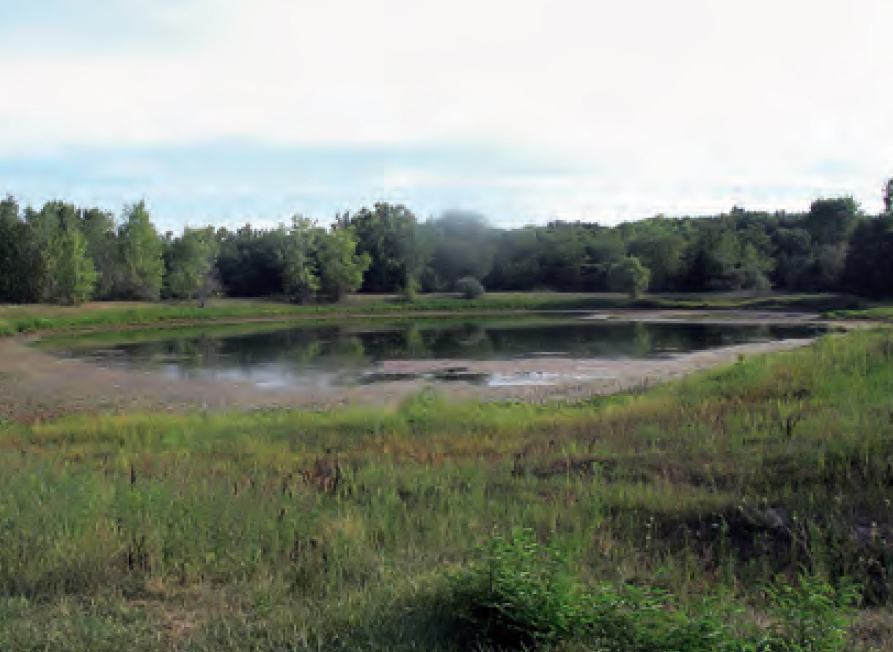Managing pond stress in drought

COLUMBIA, Mo. — Continued drought combined with high temperatures can have devastating effects on fish ponds.
During a drought, pond waters can drop to dangerous levels, increasing aquatic plant growth, decreasing water quality and stressing fish, making them more vulnerable to disease and death, says Bob Pierce, University of Missouri Extension fisheries and wildlife state specialist.
The MU Extension publication “Managing Missouri Fish Ponds During an Extended Drought,” developed by Pierce and retired Lincoln University aquaculture specialist Charles Hicks, is available for free download at extension.missouri.edu/g9401.
Ponds in very small watersheds or on marginal soils typically are the first to have problems as water levels decrease through seepage, evaporation and lack of runoff, Pierce says in a press release. Among the problems that can occur:
- Fish may become stressed as they are confined to smaller volumes of water.
- Waste metabolites such as ammonia, carbon dioxide and nitrates are concentrated, which can further stress and even kill fish.
- Less dissolved oxygen is available for the fish as they and other aquatic organisms are crowded into smaller volumes of water.
- Unwanted aquatic vegetation and algae begin to grow as nutrient levels in the pond become more concentrated.
Pond water level
Drought conditions will create shallow areas that expose plants to more sunlight and encourage rapid growth. Aquatic plants can be reduced or controlled through practices such as using recommended aquatic herbicides and stocking grass carp. Texas A&M University’s AquaPlant website at aquaplant.tamu.edu has excellent aquatic plant identification and control recommendations, Pierce says.
Aeration and pond oxygen
Drought increases the danger of oxygen depletion in ponds. Warm water holds less dissolved oxygen than cooler water. Algae and aquatic plants become more abundant in warm water and in ponds with lower water levels. While plants produce oxygen in daylight, they consume oxygen at night and during extended cloudy periods. Also, intense sunlight can cause algal blooms to die off, which further depletes oxygen. More abundant vegetation can also cause wide swings in pH levels.
Supplemental aeration in ponds can protect fish during a drought, Pierce says. The simplest solution is an electric aerator that provides about 3/4 horsepower of efficient aeration per acre of pond.
Reducing the chance of a fish kill during drought
Pond owners can take preventive actions to reduce the chance of fish kills in drought-affected ponds.
- Keep cows and other livestock from having direct access to the pond. Wading livestock will muddy the water and further stress the fish. Manure in the pond will contribute to oxygen depletion.
- Do not apply aquatic herbicides to the pond during a drought. High temperatures and reduced water volume will heighten the risk of oxygen depletion as a result of increasing plant decay.
- Take measures to thin the existing fish population, such as fishing the pond more.
Observe your pond and quickly react to changes
If possible, observe your pond daily during a drought. Timely action may save your fish or reduce treatment costs. Plan for how you will take corrective action when a problem is identified.
Contact the Missouri Department of Conservation or your local MU Extension center for additional recommendations on controlling nuisance aquatic plants, managing pond water quality and preventing a fish kill during a drought.
For more information on pond management and techniques to prevent and solve pond problems:
• “Pond Dynamics and Water Quality Considerations” (MU Extension publication G7476), extension.missouri.edu/g9476.
• “Missouri Pond Handbook” (Missouri Department of Conservation), mdc.mo.gov/sites/default/files/2020-05/MOPondHandbook.pdf.
Miss Clipping Out Stories to Save for Later?
Click the Purchase Story button below to order a print of this story. We will print it for you on matte photo paper to keep forever.

